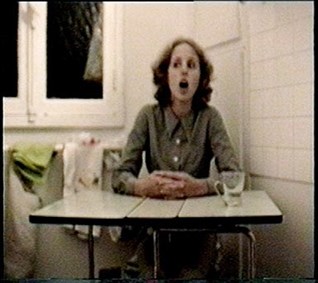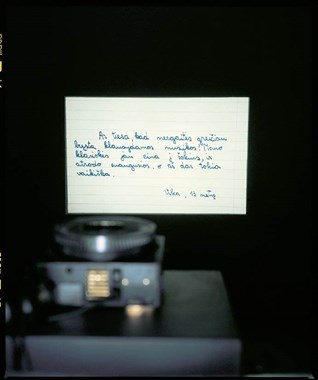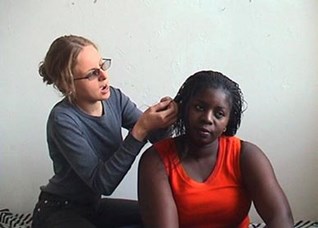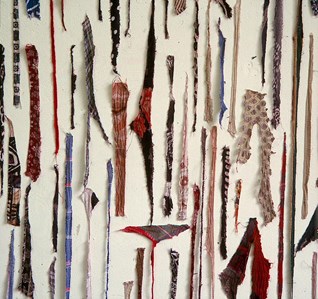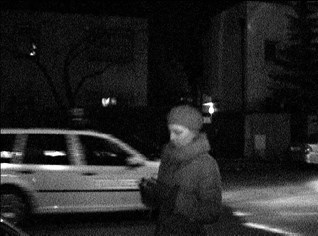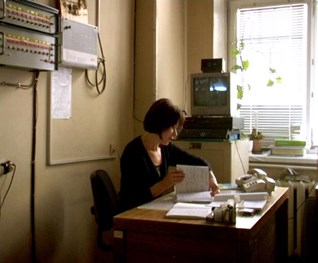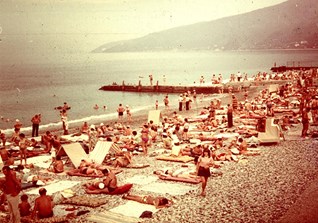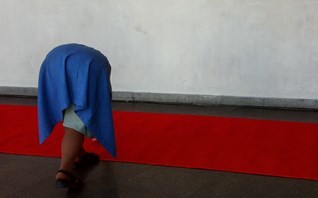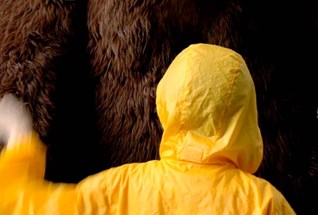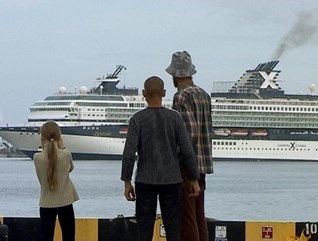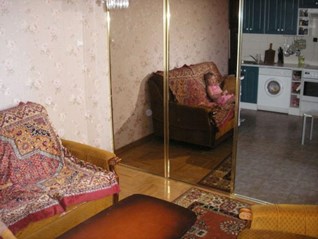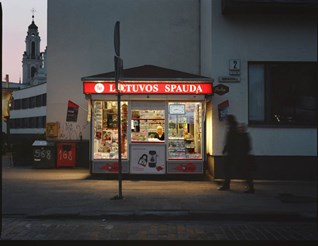The project consists of two parts: a performance (titledWhat Does the Snail Hide in Its House?), conceived while studying at the Institute of Visual Arts in Orleans, and a video of me sitting in the kitchen and singing, trying to remember all Lithuanian folk songs I know from family celebrations, and me standing in a room, quoting Lithuanian literary works I had been taught in school. There are more pauses and silence than sounds in this video.
80 letters written by adolescent girls to the editors ofPanelė(Young Lady) magazine, in which the girls are seeking advice from gynaecologist Vaiva, have been selected for this work. Other girls of the same age have copied these questions in calligraphic handwriting on school exercise book pages. These texts were photographed for the slide projection. The girls are exploring themselves like in a sex laboratory:
"Vaiva, I suffer from a boyfriend mania. I want them, desire them, and have erotic dreams at night. What should I do? It tires me and gets on my nerves." Loreta, 14 years
"I have read in one magazine that breasts dissolve like soap in a hot bath. Is it true?" Eglė, 15 years
"How to make breasts grow faster? How to know whether they have fully formed? Does cappuccino damage breasts a lot?" Diana, 14 years
"How to make a decision whether to give birth or not?" Rasa, 15 years
When I got accepted into an international artist residency programme inVienna, I decided to re-approach the notion of intercultural communication. Videotaping the whole process, I endeavoured to count the braids on the head of a fellow artist fromSenegal, saying each number aloud in German slowly and monotonously. Due to the ritual-like nature of the action, the rhythm of my words and foreign language employed, the girl eventually drowsed off.
I set about to unweave a cheap IKEA carpet manufactured inPakistan. Upon unweaving it, I thoroughly washed and ironed the resulting rags decorated with Oriental patterns. Each of these was then reused - I attached the parts of the former carpet to the wall, turning it into a piece of "wall painting". From the perspective of production, I performed a non-functional, inverted action. By this action, I have "personalised" an anonymous, mass-produced piece made by Thirld World women.
One night in a calmViennaneighbourhood, I tried to catch a fluorescent lamp and turn it so that it would illuminate just the windows of my apartment instead of the street. I was concerned with the very intention of this action, seeking to rethink the status of an artist - a nomad and eternal tenant.
A woman fromSt. Petersburgnamed Nadezhda (Russian forHope) came to live inLithuaniain 1995. She works as a guard and learns two foreign languages - English and Lithuanian - on her own. I have recorded one of her lessons on video.
I have also used a part of my private archive in this work - a souvenir set of anonymous 3D stereo slides portraying a trip to the Black Sea, originally produced in a quantity of 9000 copies (a present from my grandmother). It appears that an eternal sunny day is captured in these images. The photographed landscapes and people resemble still-life compositions; each shot suspiciously appears like a staged one. Their three-dimensionality produces an impression of a paradise lost peeped at through a keyhole.
The video and the slides are connected by here and now and there and then situations and history-changing events that took place soon after the slides had been produced.
A woman from St. Petersburgnamed Nadezhda (Russian forHope) came to live inLithuaniain 1995. She works as a guard and learns two foreign languages - English and Lithuanian - on her own. I have recorded one of her lessons on video.
I have also used a part of my private archive in this work - a souvenir set of anonymous 3D stereo slides portraying a trip to the Black Sea, originally produced in a quantity of 9000 copies (a present from my grandmother). It appears that an eternal sunny day is captured in these images. The photographed landscapes and people resemble still-life compositions; each shot suspiciously appears like a staged one. Their three-dimensionality produces an impression of a paradise lost peeped at through a keyhole.
The video and the slides are connected by here and now and there and then situations and history-changing events that took place soon after the slides had been produced.
For a year, I had been filming various companies' corporate parties. I was interested in the very preparations for the celebration. I filmed the work of the service staff, from laying the tables and soundchecks to the event's beginning - the so-called welcome drink. In the film, these moments of preparation are intercut with images of illegal garden-plots in the outskirts ofKlaipėdacity. It had been planned to build an amusement park on this land, yet later the city's development plans were halted, and the land was squatted by illegal gardeners almost exclusively of Russian Orthodox background. The summer of 2005 was the last one for these gardens, just as that autumn's crop. The first sign of the "last days" came in the form of a new shopping mall bearing a symbolic name BIG erected near the area. These two lines are combined into a single narrative about preparation. In one case, it is a preparation for celebration, in the other - preparation for eviction.
In this project, the research object is the German language textbook I had been using while in the 1st grade. I was interested in the ways in which a child's worldview had been shaped through foreign language learning. The textbook's didactic texts appear as an odd combination of two elements: German culture and Soviet ideology. It is essentially written in a coded language supposed to program the child's mentality.
The textbook's "protagonist" is Brummel the Teddy Bear fromEast Berlin. He is a secret agent, a messenger, an intermediary betweenBerlinandLithuania. I decided to turn my trip toBerlininto a project, the objective of which was to travel to the city for the first time and look for this bear that I "hadn't seen for 20 years". InBerlinI would walk everywhere on foot, looking for Brummel.
The project consists of two slide projections and an audio soundtrack. One of the projections is myBerlindiary documenting the search for Brummel. The other one captures my reunion with the found "real" Brummel. I have turned the textbook's texts into a soundtrack, in which I read the selected excerpts about Brummel, telling his story from arrival toLithuaniato mysterious disappearance.
The video captures a cruise ship that has delivered foreign tourists to theportofKlaipėdafor a brief fête of entertainment, adventure and discovery. It features scenes of waiting for the hailing ship, its slow sail, the tourists' landing, the rites of hospitality performed by the locals and, finally, the ship's departure. The travellers are greeted by a group of local inhabitants who act like true "natives". These include ethnic music and ballroom dancing collectives, maidens wearing flower wreaths who serve mineral water, and animal impersonators. The visitors watch the show from the balconies of their cabins.
These are photographs of real estate objects taken at the peak of the real estate bubble in 2007. I have selected and "appropriated" the images of certain apartments, homesteads and houses for sale published on real estate agencies' websites. I had a criterion of selection: the photographs had to feature the unintentional portraits of the owners and their families or their reflections in reflecting surfaces. Captured in the spaces inhabited by them, these people resemble ghosts stuck in the margins of the photographs. These are their last shots in their own homes.
This is my second work focusing on the same Russian woman Nadezhda who has been living inLithuaniafor quite a long time. I accidentally met her five years later. She had switched from working as a guard to working in a newsstand. The work captures our reunion in a changed environment. It features historical documentary material from the former workplace shared by us, a building that has been literally levelled with the ground. The text written by me laconically captures micro and macro movements in one ofVilnius' streets. In this project, I was concerned with juxtapositions and fluctuations of personal and communal stories, as well as symbolic coincidences.



